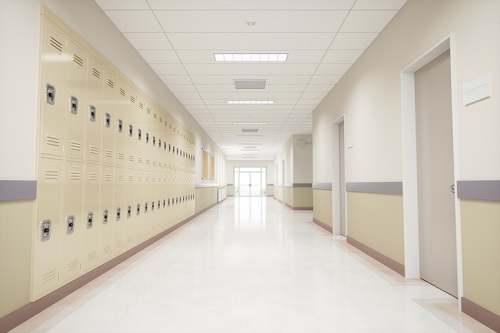
When most teachers and principals were students, schools were simply buildings with classrooms, staff rooms and recreational areas. Today, ‘smart buildings’, hi-tech ‘makerspaces’ and other innovations are reshaping what modern schools look like, and how they function.
The increasing presence of smart buildings – automated facilities that control the heating, ventilation, air conditioning, lighting, security and other systems – have opened up a number of both opportunities and added considerations for school leaders across Australia.
John Pilkington, Victorian Commercial Manager at Legrand said connection between students, teachers/lecturers is in high demand, as well as connection to educational resources.
"This is driving the need for buildings to be constantly updating to keep up with the times,” Pilkington told The Educator.
He pointed to the shared goal of educators, who are always striving to prepare their students for success and the skills needed to achieve their future career ambitions.
“With the world continuously becoming more connected and ‘smarter’, their secondary and tertiary education facilities are often there first experience with what will become the platform for there working world,” Pilkington said.
Another trend driving the uptake of smart facilities, says Pilkington, is student demand.
“Student demand drives these facilities to update and adapt with new technology,” he said, adding that students will preference a facility that is advanced in this space.
Finally, Pilkington says, educators are beginning to see the potential for long-term cost savings as a result of adopting smart facilities.
“The long-term savings of having things like a building management system, upgraded quality LED lighting and lighting management solutions or monitored exit and emergency systems have long term cost saving implications for any facility,” he explained.
Better strategic thinking needed
Rich Nedwich, global director of education at Ruckus Wireless, says it is imperative that schools improve strategic thinking with regards to connected classrooms.
“Collaboration between the principal, IT department and director of the curriculum is vital. Each party brings an essential point of view to the discussion,” Nedwich told The Educator.
Firstly, says Nedwich, the principal brings a “holistic view” of the school and can workshop options with the other two departments to ensure the implementation meets the needs of the curriculum, and stays within budget.
“The IT manager can ensure a solution that can be properly deployed, then diagnosed and managed remotely,” Nedwich explained.
“The curriculum director is best placed to discuss the learning resources that will be utilised in the near and far future, such as those needed by schools in rural communities moving towards remote learning.”
Nedwich pointed to some of the pitfalls, and solutions, when managing ICT-related issues in a fast-paced education technology environment.
“There are two major pitfalls: underinvestment and overcomplicating the solution. Solve for the learning experience you want to achieve somewhat longer than the short-term,” he said.
“It is far better to have future-proofed infrastructure that can be built up over time rather than a half-measure solution that will become quickly antiquated.”
Nediwch said teachers also want to teach, “not deliver tech support to a class of thirty”.
“Unfortunately, teachers are all too often viewed as the first line of defence when there are issues with the wireless infrastructure. A cloud-managed Wi-Fi solution can alleviate this problem,” he said.
“Such a solution allows the systems administrator to see the status of the entire network directly on a smartphone with a simple interface that can be used by non-technical staff if need be.”


